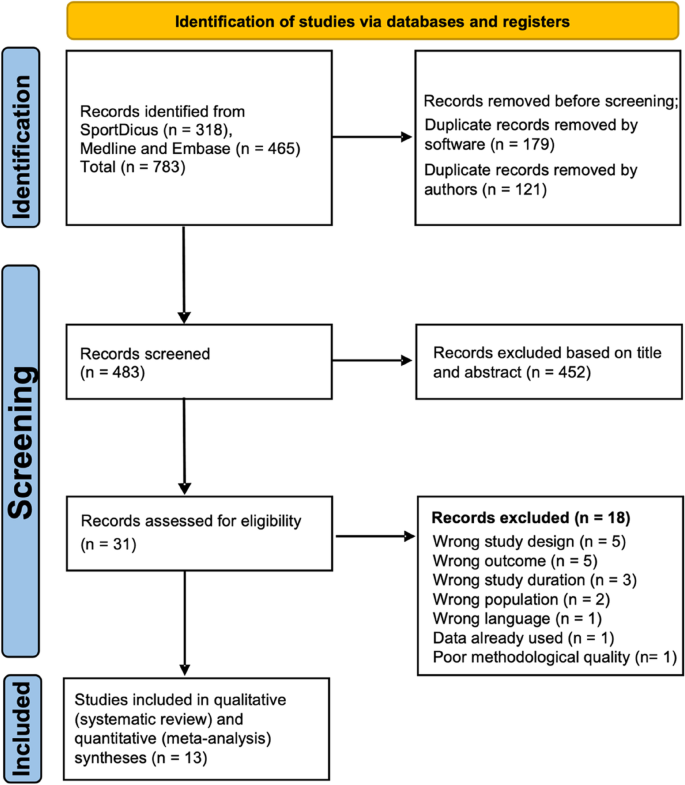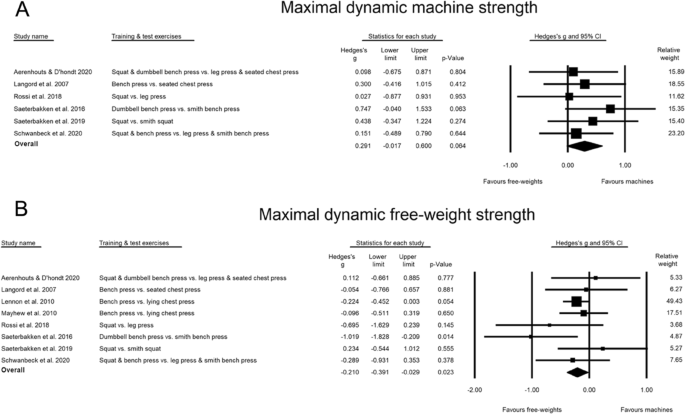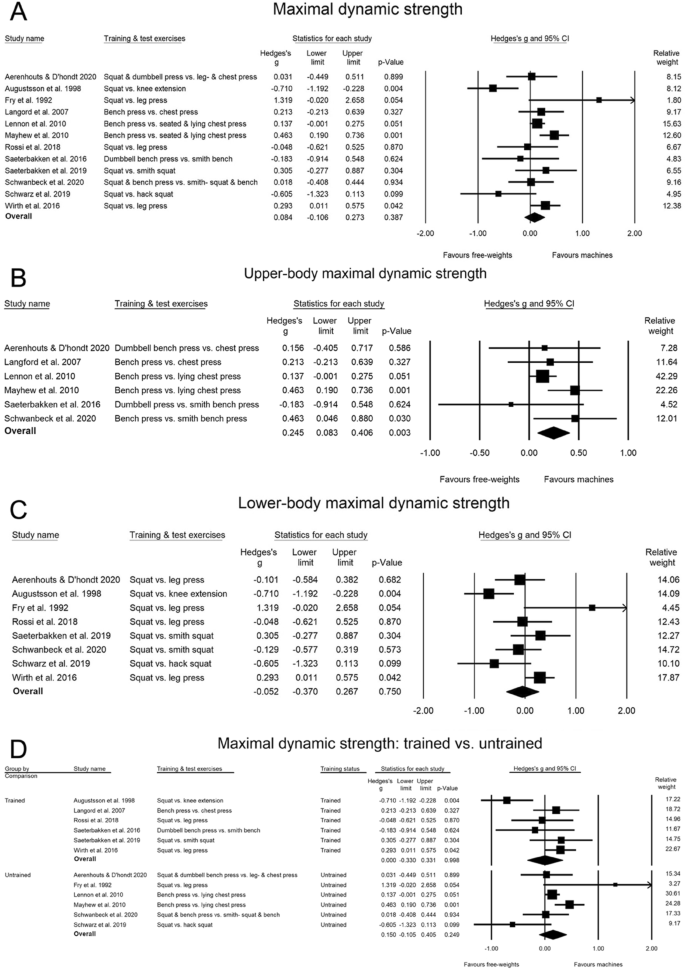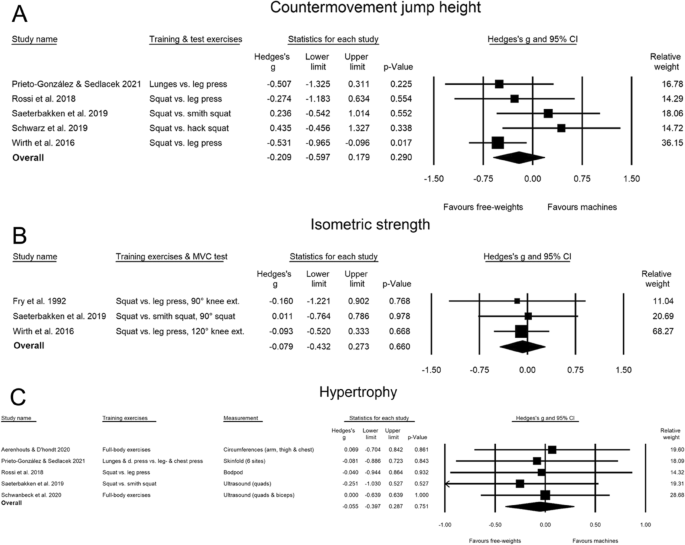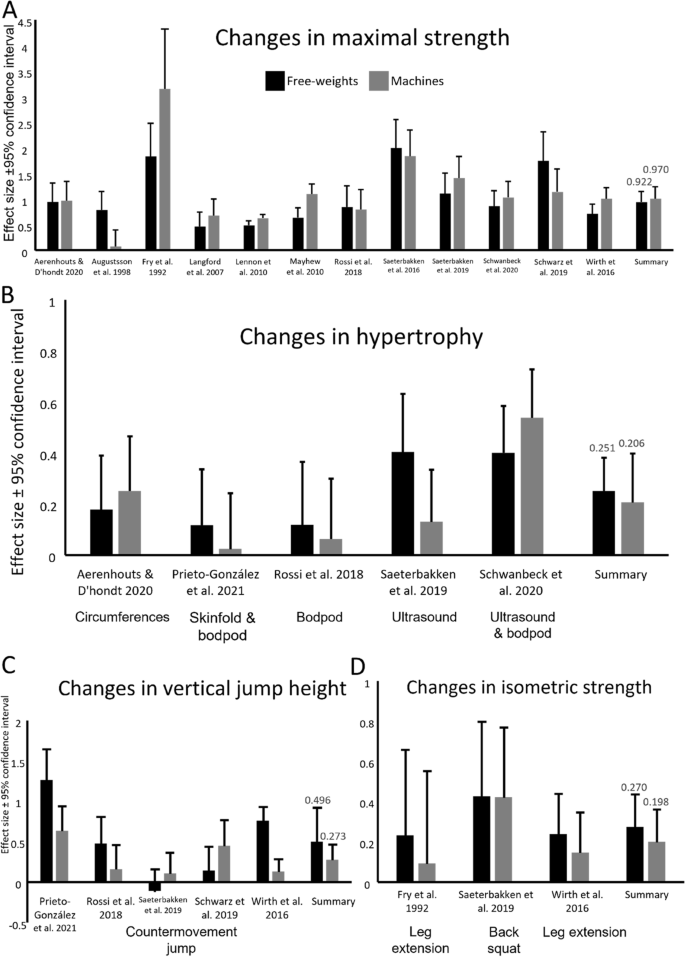A complete of 704 research had been evaluated primarily based on the preliminary outcomes of the search and diminished to 429 after duplicates had been eliminated. Following the title and summary screening, 30 research had been reviewed in full textual content. Subsequently, 13 research that fulfilled the inclusion standards had been included [4, 12, 23, 24, 27, 32, 34,35,36,37,38,39,40]. Moreover, the reference listing of all included research was checked for potential research lacking from the preliminary search, however no further research had been noticed. The search course of is proven in Fig. 1.
Traits of the included research
Six of the research concerned educated [4, 12, 27, 32, 37, 40] and 7 concerned untrained individuals [23, 24, 34,35,36, 38, 39]. Not one of the research examined aggressive athletes. The overall numbers of individuals within the research had been n = 1016, with 789 males and 219 ladies with a mean pattern measurement of 72.6 ± 111.7 (vary 19–429). Two research included each women and men [32, 38] and two research included solely ladies. The typical period of the research was 8.9 ± 1.9 weeks (vary 6–12), and the coaching frequency was from two to 4 periods per week. Widespread workout routines within the free-weight teams had been barbell workout routines such because the again squat and bench press, whereas leg press, chest press and numerous Smith machine workout routines had been typically used within the machine teams. Participant’s traits together with different particulars type the included research are listed in Desk 2. Six research assessed muscle hypertrophy [4, 23, 24, 36,37,38], whereby two measured muscle measurement by ultrasound [4, 38], two used physique composition estimates from bod pod [37, 38], two used skinfolds to estimate physique composition [24, 36], and one used circumferences [23]. The muscular energy evaluation was obtained via energy assessments with the next strategies: 1 RM [23, 24, 35,36,37, 39, 40], 3 RM [12], 6 RM [27, 28] 6–10 RM [38], and 10 RM [4].
High quality evaluation
Desk 3 presents the outcomes of the standard evaluation. The typical rating was 8.6. 5 research had been rated as truthful high quality [12, 24, 34, 35, 40]. Eight research had been rated pretty much as good [4, 23, 27, 32, 36, 37, 39]. Not one of the research was rated as having poor or wonderful methodological high quality. The raters common imply sum scores on the research (n = 13) had been 7.36 (SD = 1.15) and seven.64 (SD = 1.15), respectively. The intraclass correlation (two-way-mixed impact, absolute settlement) for the 2 raters was 0.85, with 95% Confidence Interval: 0.54 to 0.95, with p = 0.001.
For the research from Saeterbakken [27] and Augustsson [32], there have been a number of minor disagreements on the Testex high quality evaluation of things 1, 4 and 6. To succeed in 100% consensus on the standard evaluation, disagreements had been solved via dialogue between the 2 raters. The ultimate score scores are listed in Desk 3.
The impact of free-weight versus machine-based coaching on maximal dynamic energy
The meta-analyses on adjustments in maximal energy in free-weight train assessments noticed a big better enhance within the free-weight coaching group than within the machine coaching group (SMD: -0.210, CI: -0.391, -0.029, PI: -0.484, 0.064, p = 0.023) (Fig. 2A), with no distinction between educated and untrained (SMD: -0.356 and -0.185, respectively (SMD: -0.356 and -0.185, respectively, p = 0.574). Maximal energy in machine-based energy assessments tended to extend extra within the machine group than the free-weight group (SMD: 0.291, CI: -0.017, 0.600, PI: -0.147, 0.729, p = 0.064) (Fig. 2B), with no distinction between educated vs. untrained ((SMD: 0.385 and 0.129, respectively) SMD: 0.385 and 0.129, respectively, p = 0.427). The outcomes had been constant throughout sensitivity analyses (with r = 0.5 and 0.7). Nonetheless, removing of Lennon [35] from the free-weight train check evaluation would have adjusted the purpose estimate from vital to non-significant (SMD: -0.207 [CI: -0.490, 0.077], p = 0.153), and removing of every of the 2 research by Saeterbakken et al. [4, 28] from the machine check evaluation adjusted the purpose estimate from an inclination to non-significant values (SMD: 0.209–0.265 [CI: -0.126–0.6], p = 0.122–0.222).
The meta-analyses on energy discovered maximal energy in free-weight train assessments to extend considerably extra within the free-weight group than within the machine group (SMD: -0.217, CI: -0.382, -0.053, PI: -0.415, -0.019, p = 0.010), with no distinction between educated and untrained (p = 0.490). Maximal energy in machine-based energy assessments tended to extend extra within the machine group than the free-weight group (SMD: 0.243, CI: -0.046, 0.531, PI: -0.134, 0.621, p = 0.099), with no distinction between educated vs. untrained (p = 0.578). The outcomes had been constant throughout sensitivity analyses (with r = 0.5 and 0.7), nonetheless, removing of Lennon [35] from the free-weight train check evaluation would have adjusted the purpose estimate from vital to a development (SMD: -0.220 [CI: -0.477, 0.038], p = 0.094).
The impact of free-weight coaching on free-weight energy versus machine-based coaching on machine-based energy (direct-strength-comparison-analysis)
Within the direct-strength-comparison-analysis (machine group examined machine-based energy versus free-weight group examined in free-weight energy), no vital variations had been noticed between the free-weight teams versus the machine teams (machine ES—free-weight ES: 0.084 (CI: -0.106, 0.273, PI: -0.481, 0.649, p = 0.387)) (Fig. 3A). The outcomes had been related with correlation coefficients of 0.7, whereas a development was noticed with correlation of 0.5 with better energy enhance in machine-based coaching (SMD 0.202, CI: -0.034, 0.438, p = 0.094). Moreover, the sensitivity evaluation discovered that removing of Augustsson [32] adjusted the outcomes to considerably favour energy adjustments within the machine group (SMD: 0.187 [CI: 0.041, 0.334], p = 0.012). Coaching standing didn’t affect the outcomes (p = 0.483), strength-trained ES: 0.0005 (CI: -0.330, 0.331, p = 0.998) and untrained ES: 0.150 (CI: -0.105, 0.405, p = 0.249) (Fig. 3D). The direct-strength-sub-analyses revealed no variations between upper- vs. lower-body (p = 0.104); upper-body energy elevated extra within the machine group in comparison with the free-weight group (SMD: 0.245, CI: 0.083, 0.406, p = 0.003) (Fig. 3B), however no group-differences had been noticed within the lower-body energy evaluation (SMD: -0.052, CI: -0.370, 0.267, p = 0.750) (Fig. 3C). The one-study removing sensitivity analyses didn’t change the outcomes.
Forest-plot that exhibits the impact of free-weight coaching on adjustments in free-weight energy, versus machine-based coaching on the adjustments in machine-based energy (direct-strength-comparison-analysis), in maximal dynamic energy (A), maximal dynamic energy within the upper-body (B), maximal dynamic energy within the lower-body (C), and the affect of coaching standing (D) That is the impact of free-weight coaching on free-weight energy versus machine-based coaching on machine-based energy (direct-strength-comparison-analysis)
The impact of free-weight- versus machine-based coaching on isometric energy
No vital distinction was noticed between the free-weight vs. machine group in isometric energy (SMD: -0.079 [CI: -0.432, 0.273, PI: -2.365, 2.207, p = 0.660) (Fig. 4B) and the sensitivity analyses did not influence the results.
The effect of free-weight- versus machine-based training on countermovement jump height
No significant difference was observed between the free-weight vs. machine group in countermovement jump performance (SMD: -0.209 [CI: -0.597, 0.179, PI: -1.208, 0.790, p = 0.290) (Fig. 4A) and the results were robust across different correlation coefficients. However, removal of the study by Schwarz [39] from the evaluation adjusted the purpose estimate from a non-significant impact to considerably favor the free-weight group (SMD: -0.364, [CI: -0.686, -0.042, p = 0.027).
The effect of free-weight- versus machine-based training on hypertrophy
The meta-analysis revealed no significant differences in hypertrophy between the free-weight vs. the machine group with a SMD of -0.055 (CI: -0.397, 0.287, PI: -0.611, 0.500, p = 0.751) (Figs. 3 and 4C). Sensitivity analysis and correlation coefficients did not influence the result.
Heterogeneity and risk of bias for the between groups analyses
Cochran’s Q test for heterogeneity found no significant between-study variance: maximal dynamic free-weight strength: Q = 7.49, I2 & T2 = 0.00 p = 0.49; maximal dynamic machine strength: Q = 2.91, I2 & T2 = 0.00 p = 0.82; maximal dynamic strength analysis: Q = 27.7, I2 = 60.28 & T2 = 0.06, p = 0.39; isometric strength analysis: Q = 0.08, I2 & T2 = 0.00, p = 0.96; isometric strength analysis: Q = 0.08, I2 & T2 = 0.00, p = 0.66; countermovement jump analysis: Q = 5.7, I2 = 30.25, T2 = 0.06, p = 0.29 and hypertrophy analysis: Q = 0.38, I2 & T2 = 0.00, p = 0.98. However, heterogeneity was significant in the direct-strength-comparison-analysis: Q = 27.68, I2 = 60.25 & T2 = 0.05, p = 0.004. Visual inspection indicated three studies outside the publication bias plot in the direct-strength-comparison-analysis (two to the left and one to the right of the plot) but none in the other analyses. Moreover, the Duval and Tweedie’s trim and fill analysis method observed one missing study to the right of the funnel plot in the maximal dynamic free-weight strength analysis, but it did not significantly influence the results. Additionally, one study to the left of the plot was missing in the countermovement jump analysis, which also did not significantly impact the results. Furthermore, Eggers’s test for funnel plot asymmetry did not indicate potential publication bias in any of the analyses (p = 0.22–0.81).
Pre- post within group changes in maximal dynamic- and isometric strength, countermovement jump and hypertrophy (direct effect size comparison)
Maximal dynamic free-weight strength increased from pre to post test in the free-weights group with an SMD of 0.922 (95% CI: 0.713, 1.131, PI: 0.169, 1.675, p < 0.0001), whereas the machines group increased strength in the machine exercises with an SMD of 0.970 (CI: 0.738, 1.202, PI: 0.124, 1.815, p < 0.0001), shown in fig. 5A. Isometric strength increased from pre to post test in the free-weight group (SMD: 0.270, CI: 0.110, 0.431, PI: -0.769, 1.310, p = 0.001), and in the machine group (SMD: 0.198, CI: 0.036, 0.361, PI: -0.863, 1.260, p = 0.017), shown in fig. 5D. Countermovement jump height increased from pre to post training in the free-weight group (SMD: 0.496, CI: 0.067, 0.925, PI: -1.140, 2.132, p = 0.024), and in the machine group (SMD: 0.273, CI: 0.082, 0.465, PI: -0.354, 0.901, p = 0.005), presented in fig. 5C. Similarly, hypertrophy increased from pre to post test in the free-weight group (SMD: 0.251, CI: 0.121, 0.381, PI: -0.129, 0.631, p < 0.0001) and in the machine group (SMD: 0.206, CI: 0.015, 0.398, PI: -0.473, 0.886, p = 0.035), presented in fig. 5B.
Shows the effect sizes (mean ± SD) of changes from pre-test to post-test in maximal strength (A), hypertrophy (B), vertical jump height (C) and isometric strength (D). Black are changes in free-weight when participants trained with free-weights and grey are changes in machine groups when participants trained with machines


